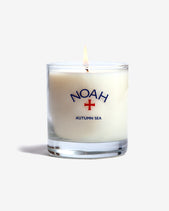Look out your window. Better yet, leave your room. Wherever you live, you are connected to the natural world, and your decisions directly affect it. But, the practice of observing the natural world, which few people make time for, is one of the most rewarding things you can ever experience. With a bit of patience and attention, you can encounter natural wonders that lay hidden in landscapes people normally drive by, step on, or don’t bother to explore. With a little luck, some of nature’s more prized sights might reward your interest with their majestic and elusive presence.
 Frank Chapman - 24-power binocular and desk-chair
Frank Chapman - 24-power binocular and desk-chair
We were fortunate enough to have such a sighting during our participation in 2016’s Christmas Bird Count. Started by Frank Chapman, founder of Audubon magazine, on Christmas day in 1900, it was conceived as an alternative to the fucked up, bloodier tradition of “side hunts,” which were competitions to see who could kill the most birds in a single day. Chapman sought to turn a callous and senseless pastime into an important tradition of conservation and observation of birds and the natural world.
 Side Hunt - Bay Shore, New York
Side Hunt - Bay Shore, New York
The first Christmas Bird Count involved 27 participants in 25 different locations in the US. Today, with over 72,000 participants in more than 2,400 locations worldwide, the Christmas Bird Count (CBC) is one of the most popular and longest-running citizen-scientist projects on the planet.
 Juvenile Mute Swan
Juvenile Mute Swan
Some of us at Noah were able to join the Eastern Long Island Audubon Society’s CBC for Central Suffolk County this year. We ended up going to three locations with varied landscapes in a 15-square-mile area. By the end of the day, we’d sighted 30 different species of birds, including snow geese, buffleheads, and hooded mergansers in the overcast and light rain of the morning. But the highlight was getting to see a snowy owl perched on the dunes of the beach toward the end of the day.
 Snowy Owl
Snowy Owl
With the waves crashing behind us and the sun about to set, the young owl let us take a good look at him as he sat, aloof and mysterious, looking out at the water. Snowy owl numbers are in rapid decline despite being protected by the Migratory Bird Species Act. Significant reductions in their food sources, along with climate change, development, hunting, and collisions with cars and power lines are all contributing to this.
 Mallard
Mallard
 Male Hooded Merganser
Male Hooded Merganser
The tradition of the CBC has provided many insights into the welfare of birds over time. One alarming fact is an average 68 percent population decrease in common birds since 1967. More hopefully, there’s been a 6 percent annual increase in sightings of bald eagles from roughly the same period. But many beloved species, both rare and more populous, remain in serious decline. The EPA has included such data from the CBC as one of twenty six indicators of climate change.
We’ve been participants in the observation of the natural world for several years, and have observed habitat encroachment and species decline with our own eyes. Yet we’re proud that such an enjoyable tradition is helping spread awareness, and hopeful that more people will take an interest in the preciousness and fragile state of the nature around them. The CBC is just one of MANY satisfying ways to do this, but one that never fails to encourage a more thoughtful and inquisitive frame of mind heading into the new year. Please get involved with preserving the natural world anyway you can. We need to take care of the earth, and all of its inhabitants, before it's too late.
Thank you,
NOAH
If you would like to donate to the local NYC audubon please do at www.nycaudubon.org, or nationally at www.audubon.org
Bird photography - Kyle Kusa





















 Frank Chapman - 24-power binocular and desk-chair
Frank Chapman - 24-power binocular and desk-chair Side Hunt - Bay Shore, New York
Side Hunt - Bay Shore, New York Juvenile Mute Swan
Juvenile Mute Swan Snowy Owl
Snowy Owl Mallard
Mallard Male Hooded Merganser
Male Hooded Merganser